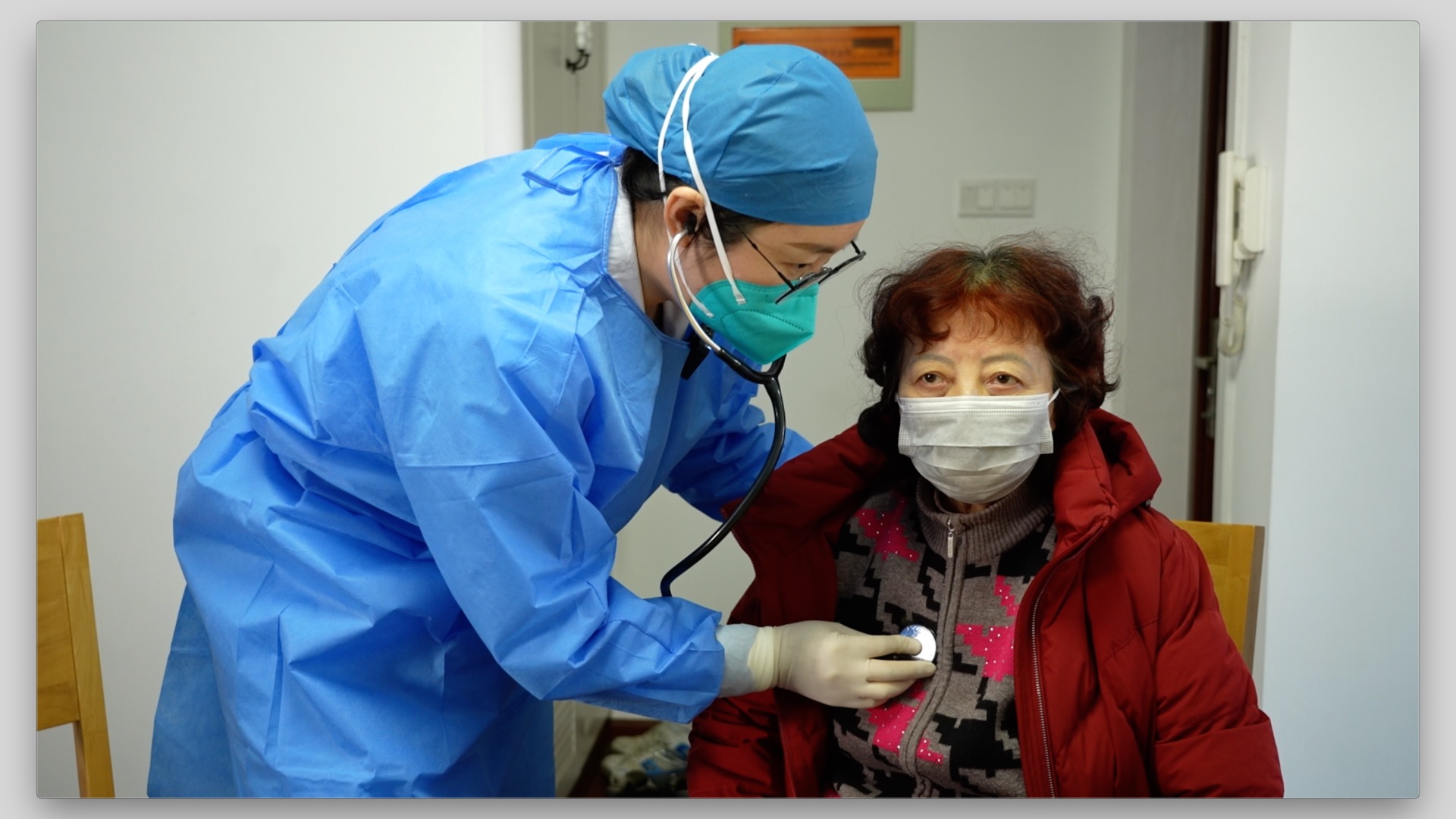02:22

On January 7, 2023, China issued the 10th edition of its diagnosis and treatment protocol for COVID-19, which stressed that people aged 65 and above, especially those not fully vaccinated, are at high risk for severe and critical illnesses and require special attention and management.
China downgraded its COVID-19 management from Class A to Class B on January 8, thereby prioritizing medical treatment for severe cases and high-risk individuals. With over 14 percent of its population aged above 65, the country has devoted great efforts to safeguarding the more vulnerable older people with community health centers being the beating heart of medical care in grassroots urban areas.
In fact, medical workers at community healthcare centers have been busy evaluating potential high-risk residents within their administrative streets since December of last year.
At Jinfan Community Healthcare Center in Suzhou City of east China's Jiangsu Province, four teams of eight or nine medical workers led by general practitioners here check on the high-risk group through daily phone calls and conduct home visits free of charge if it's a COVID-19-related problem.
Some 2,000 people were identified as high-risk in the residential community that this healthcare center serves after two rounds of ongoing telephone interviews.
"It's important that we monitor them regularly," said Jiang Linlin, a general practitioner who also specializes in Traditional Chinese Medicine diagnosis at Jinfan Community Healthcare Center.
"When we check on them over the phone, we ask about any changes in their condition and let them know when they need to receive treatment at the hospital or pay a visit to this center," Jiang told CGTN.